The Most Objective “Best of 2012″ List Ever, Part III: Social Media

http://www.forbes.com/sites/benkerschberg/2011/09/28/managing-information-risk-and-archiving-social-media/
Earlier this week I posted “Part I: Television” and “Part II: Memes” of “The Most Objective ‘Best of 2012’ List Ever.” There doesn’t seem to be much enthusiasm for these highly idiosyncratic “Best Of” lists that I’ve been producing BUT I’m the kind of gal who likes to finish what she starts, so today I present Part III of my list:
Best of Social Media
You thought this post was going to be about Pinterest, didn’t you? Wasn’t 2012 the year of Pinterest? And really, I should be the target consumer for Pinterest since, according to MediaBistro, 97% of Pinterest users are female. And I’m a female. But after just a few weeks of heavy use back in March, I stopped using my Pinterest account all together. Simply put, I found it overwhelming. So many crafts to make, so many recipes to try, so many quick and easy ways to “do it yourself!” and “make your own.” I want someone else to “do it” and I want to “buy my own.” Pinterest just made me feel bad about myself — which is, apparently, a common complaint about Pinterest. So, no, this post is not about Pinterest. All of you crafty go-getters and DIY-ers need to pick up your homemade Christmas ornaments and old timey cold remedies and go elsewhere.

http://www.lostinidaho.me/2012/02/pinterest-devolving-of-social-media.html
My favorite social media this year is Facebook Groups. Now, I know, I know, Facebook introduced its “Groups” feature way back in October of 2010. But remember folks, this is my list. I do what I want. Facebook Groups qualifies for my “Best of 2012” list because it was not until 2012 that I began to use Groups in earnest and realized the potential of this excellent social media feature. If you have not used this function, it’s very simple: Facebook Groups allows you to start a group (on say, “bird watching” or “rabble-rousing”) and then invite select individuals to join you there. You can make the group private or public and can give those you invite the option to invite others to join as well. Prior to 2012 I was not involved in any Facebook groups. Now I belong to nine:
All of these Groups address different needs in my life and contain different users. For example “Greenville” is a venue for members to post questions and announcements pertaining to the city of Greenville (aka, the town where I live). Here people ask for recommendations for house painters, doctors, and babysitters, or post about Greenville-related events. Sadly, this is the least active group to which I belong — mostly because it is small and many of the users are not active social media users (so they don’t see posts or think to respond to them) and because Greenville is the place where fun goes to die (so why should its FB Group be any different?). I also belong to a Group for my children’s school and for a dear friend who was recently diagnosed with breast cancer and wanted a private space in which to update her friends and family about her treatments and prognoses. There are so many uses for this feature.

source:
http://jones.house.gov/office/greenville-office
The most active Groups to which I belong were started by my fellow social media addicts — those who keep tabs on when fellow Group members make posts and engage them in conversation. For example, my all-time favorite FB Group experience from the past year was Skirthathon 2012. For those who do not reside in my small corner of the internet, Skirtathon is the brain child of Dr. Kristen Warner and its premise is simple: wear a skirt or dress every weekday for the entire month of April. For Skirtathon to work, the participants must announce what they are wearing each day to the group. That way, we can keep tabs on each other and shame one another for failures “to skirt” (sample excuses include: “Too tired” and “It’s raining.”). When I participated in Skirtathon 2011, we relied primarily on a Twitter hashtag (#Skirtathon2011) to track each other’s outfits. But I will admit that I often felt a little sheepish posting photos or outfit descriptions to my entire Twitter feed. Though it shouldn’t, it made me feel (like others would feel) that I was frivolous or shallow, a “silly girl.” That’s why this year’s Skirtathon was so much better — this time we had our own private FB Group where participants could not only post photos of their outfits, but the rest of us could comment on these outfits and even provide links to the stores where they were purchased. There was much ooo-ing and ahh-ing and skirt-envy in these comment threads.

As the month went on, the women participating in Skirthaton became increasingly creative and bold, not just in their outfit choices but also in the backdrops and poses used in photos. Suddenly, we were all living in our own personal Anthropologie editorial photo spreads. We also posed with our dogs, cats, babies and even our very large (and very beautiful) pregnant bellies. Even though many of the women using the Group had never met each other in real life (some had not even met via social media prior to joining the Group), everyone gamely commented on each other’s outfits, accessories, and artful use of lighting. I loved seeing a woman I know only because she is the friend of a woman I know through Twitter telling one of my childhood best friends how adorable her son is. It sounds forced but it wasn’t. This is going to sound incredibly cheesy but I’m going to go ahead and say it: this group made me feel beautiful and empowered. Go on and laugh, cynics. But I hold fast to this truth: Skirtathon reminded me that I can love a good sale, a well-placed belt, and a patterned stocking and still be an excellent and serious scholar. I’m every woman, it’s all in meeeeeee. Below are some of my favorite images from this past spring’s Skirtathon (used here with each lady’s permission):
(For more on Skirtathon, check out Kelli Marshall’s post here)
Another FB Group I joined and loved this year was an online book club entitled “Fancy Ladies Book Club.” There was a little bit of secrecy surrounding this book club (for example, this In Media Res post discussing one woman’s participation in the book club was written anonymously for fear of tenure-related repercussions) since the club was formed in order to read E.L. James’ 50 Shades of Grey. But let me be perfectly clear: I was and still am a member of the Fancy Ladies Book Club. In fact, I gave the Fancy Ladies Book Club its “fancy” name as a subterfuge so folks wouldn’t know we were really reading mommy porn. Wasn’t that clever of me? A private group was perfect for such an endeavor since we all wanted to be able to speak as freely (and crassly) as the material warranted. Since completing 50 Shades of Grey (which culminated in a live, somewhat drunken reading at a bar this summer when a few of the Fancy Ladies found themselves at a conference together), we have also read Gillian Flynn’s Gone Girl and Junot Diaz’s This is How You Lose Her. In all cases our conversations were alternately funny, smutty, smart, and enlightening. I am hoping we read Louise Erdich’s The Round House in January and that I can continue to read and learn from this community of brilliant women.
Finally, the most recent addition to my FB Groups list is also the most useful (not that dishing about erotic fiction and skirts isn’t useful too. But those Groups don’t impact my job). Approximately 2 months ago, Erin Copple Smith, an Assistant Professor of Media Studies at Austin College, started a FB Group called “Teaching Media.” Unlike the previous groups I just mentioned, “Teaching Media” is an “open group.” This means that posts to this group will appear in the poster’s FB feed and that members can invite others to join. The group now boasts 251 members and has, at least for me, been an invaluable resource for answers to questions I have had about the ins and outs of teaching a media studies-based curriculum.
While Twitter has also been a great resource for me in terms of crowdsourcing information on syllabus building as well as my own personal research (I have detailed why here), the 140 character limit can be, well, limiting when trying to get an answer to a question that is nuanced and requires a more than a single sentence to explain. Furthermore, the “Teaching Media” page serves as an archive of sorts that Group members can return to a few days, weeks, or months after the original discussion took place (this is much more difficult to do with Twitter). In the two months since the Group has been online I have asked about: how fellow instructors use Twitter in the classroom, what kinds of absence policies have worked (and not worked), and about how to handle the possibility of inappropriate audience commentary at a student-hosted screening of The Room. I have also snapped up innumerable tips for future assignments (yes, Tony Bleach, I will be playing the “genres game” you described on the first day of my spring class, “American Film Genres: Then & Now”). What is great about this Group is that people really do respond — and quickly at that — to queries. Furthermore, they respond in detail (i.e., more than 140 characters), often offering links and examples. As someone who works at a university where there is only one other film studies-trained faculty member (Hi Anna!), I often feel like I have only one person (albeit a great person) to turn to when I have pedagogical questions specific to my field. But the “Teaching Media” group has gifted me an entire 250-person (and counting) department of smart, creative, highly engaged teachers. At any hour of the day, any day of the week (except, I guess, for the day after tomorrow, which is “THE DAY AFTER TOMORROW” when the world ends), I can get an answer to my teaching-related questions. Even flesh and blood colleagues can’t offer that kind of support. When I read about the innovative assignments, in-class exercises, and curricula being used by professors all over the world, I am motivated to be a better teacher. I am, in fact, becoming a better teacher.
By now you may have noticed that 2 out of my 3 favorite Facebook Groups are populated exclusively by women and primarily by women who work in academia. I don’t think this is accidental. Although the demographics of the Ivory Tower have changed a lot in recent years, it is still, in many ways, an “old boys’ club.” By that I mean: female academics are less comfortable with traditional modes of networking and often have trouble with promoting themselves aggressively as someone worth knowing. As Zdenka Šadl explains:
The academic institutions of higher education, where men dominate (both in terms of number and hierarchy) and act to prevent women from fully participating in and integrating into formal and informal networks, are prime examples of homosocial institution [Etzkowitz, Kemelgor and Uzzi 2000; Fogelberg et al. 1999; Gupta et al. 2004; Hearn 2004; Husu 2004]. Academics generally establish informal connections on the basis of the principle of gender homophily. However, it is predominantly men who form social networks – male academics give support to their male colleagues. Husu [2001] reports that many senior women interviewed in her study observed that their male colleagues supported each other through ‘old boy’s networks’. These networks, also referred to as the ‘invisible college’, [O‘Leary and Mitchell 1990] involve informal power groups whose members are in a position to make (implicit) decisions about the academic rank, status, and position of an academic. Academic women are often excluded from academic networks, and this often puts them at a disadvantage [Kaufman 1978; O‘Leary and Mitchell 1990; Toren 1991; Vazquez-Cupeiro and Elston 2006].
(you can read the full article here)
These Facebook Groups have provided me with a welcoming intellectual community in which I feel free to discuss my love of clothing as easily as I discuss the weird blend of feminism and misogyny found in Junot Diaz’s novels. I feel like I have joined my own “invisible college” and it has improved my enjoyment of academic conferences and academic life immensely. I feel supported by these women in my field — I feel like they have my back. I know I have theirs.
On a side note, if you found this post interesting or would like to discuss it further in a [gasp!] face to face format, I am happy to say that a group of smart young female scholars will be discussing these various issues in a workshop entitled “Gender, Networking, Social Media, and Collegiality” at next year’s Society for Cinema and Media Studies conference in Chicago. I think it’s going to be fabulous.
In the meantime, though, I’d love to hear about your favorite social media site or tool that made your 2012 better. Please share below.
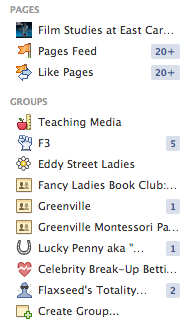
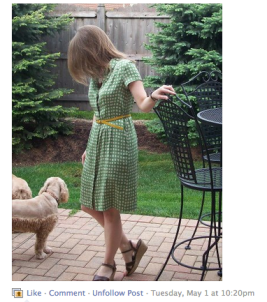
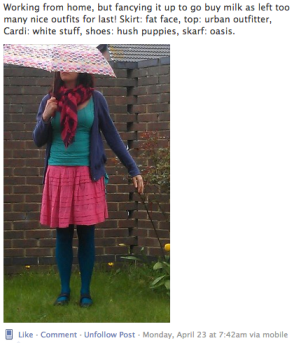
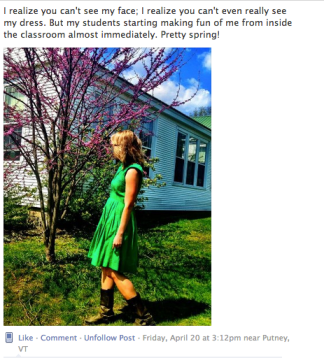
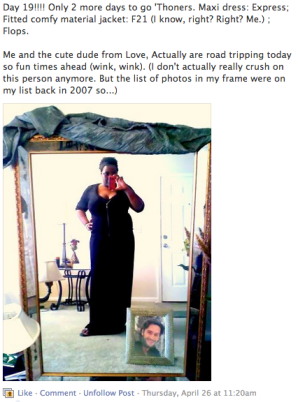


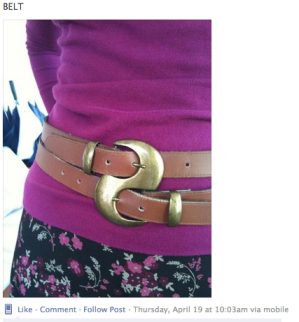


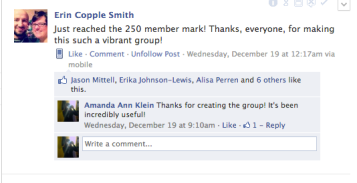
December 21, 2012 at 4:42 pm
Hi Amanda! Love this post….
December 30, 2012 at 4:18 pm
Reblogged this on The Narcissistic Anthropologist and commented:
Some more “best of” in the spirit of the new year. I like the take on Facebook Groups: breathing new life into a social media platform that is SOOOO 2011.
January 1, 2013 at 11:01 pm
Media Studies ladies and Facebook groups ftw. (Know I’m a little late to the party: still catching up from holiday-related web absence.)
January 4, 2013 at 5:16 pm
[…] This post has been evolving for a while, but posting has reached a new urgency now that I’m facing the Year of the Dissertation. It’s also been spurred by my thoughts around Laura Portwood-Stacer’s three-part series for FLOW on media refusal, considering how decisions around dis/engagements with media are made, and helped by Amanda Ann Klein’s recent entry on her favorite uses of social media for 2012. […]